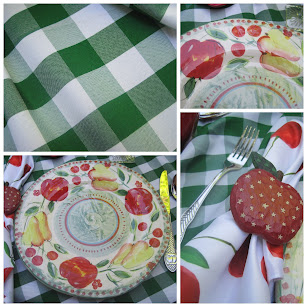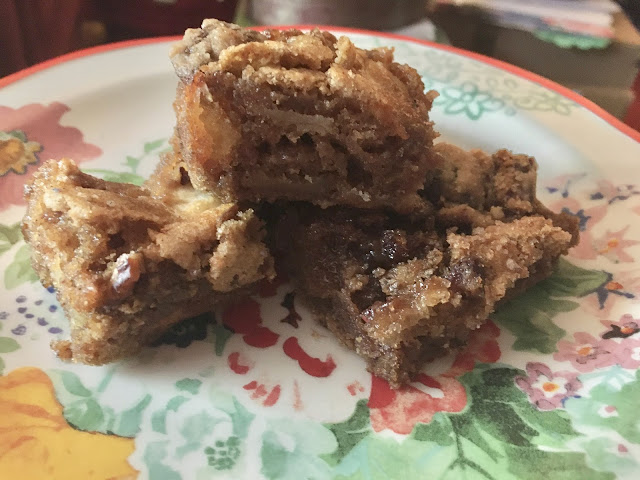I could probably write 5,000 words about the history of casseroles! I promise, I won’t! It is likely that casseroles of a sort are prehistoric. Some of the first writings about such creations are from Father Bernardino de Sahagun, a Spanish Franciscan friar who spent over 50 years in “New Spain” … Mexico. He arrived in Mexico in 1529 and did many things. He translated much of the Bible into the language of the Aztec. He studied their culture and the changes being made by the Spanish. He wrote the General History of the Things of New Spain and in it he described casseroles made with everything from tadpoles to large ants! Their casseroles included chilis, tomatoes and squash. From fish to fowl, they created what the Europeans would have called casseroles at a later time.
During Medieval Times, pies were similar to casseroles. Their contents were wrapped in thick pie crusts often called coffins. The word casserole entered the English language in 1708. Other cultures had their own forms of casseroles. In Morocco, the tagine was and is both the name container and the combination of ingredients.
The word casserole actually comes from the old French word casse. According to the Oxford Companion to Food, casserole cookery was popular in rural homes where a fire was burning all day and could be used for slow and long cooking methods. For years, casseroles were developed by the English and the French. Rice was molded into the shape of a dish and filled with a savory meat mixture. Later, borders of rice or mashed potatoes were placed on dishes of fricassee or curry. By the end of the 1800s, the word came to describe a meat dish combined with vegetables and stock. The word was actually used as a verb, but in her 1930 book, Strong Poison, Dorothy Sayers said, “It seems a shame to casserole a chicken when it would have roasted beautifully.” Casseroles during the Great Depression and certainly during wartimes were created to stretch foods or to use leftovers in a creative way. The notion of placing a whole roasted chicken on the table seems most unlikely to me!

During my favorite vintage period, the 1950s and 60s, casseroles hit the top of the popularity list! In the 1950s, glassware companies began make delightful oven-proof pieces for casseroles. It was also during this time that simmer pots and crock pots emerged in a variety of shapes and sizes. Women had left the kitchen and gone to work, so easily prepared one-dish meals were featured in all the magazines of the time. Casseroles weren’t fancy, but they were perfect for the busy homemaker.
There are zillions of casserole recipes online. If you have an ingredient you need to use up, google it and you’ll find a casserole recipe for it. I’m going to share a couple of my favorites today, and they are easy!
Spinach & Chicken Enchiladas
1 cup sour cream
1 cup green salsa
1 roasted red sweet pepper
2 cups chopped cooked chicken
8 ounces shredded Monterey Jack Cheese
10 ounce package of corn tortillas
Several big fresh spinach leaves
Mix the sour cream and the salsa and spread a third of it on the bottom of a 2 quart baking dish. Place a layer of corn tortillas on top of that and add another layer of 1/3 of the sour cream mixture on top of the tortillas. Place a layer of the spinach leaves on top of that; add half the chopped chicken and 1/3 of the shredded cheese. Drop in portions of the red pepper. Repeat these steps, starting another layer of tortillas. Finally top the casserole dish with tortillas; cover it with foil and bake it for 50 minutes at 350 degrees. Remove the foil and top the casserole with the last 1/3 of the cheese; return it to the oven for 5 more minutes to melt and brown the cheese. This makes 8 to 12 portions and can be served with additional green salsa, Spanish rice and a green salad. Garnish with additional red pepper chunks. Since this is a layered casserole, it is perfect for a potluck dinner.

This is about the easiest thing going! I used to do a lot of weekend cooking and freeze things for the upcoming week. This casserole is perfect for that.
Beef and Mushroom Casserole
1 pound ground beef
12 ounces pasta
1 can of mushrooms or 12 ounces of fresh
½ cup chopped onion
1 can cream of mushroom soup
1 cup of milk
1 cup of sour cream or cottage cheese
1 cup shredded cheddar or jack cheese
1 cup frozen corn kernels
Cook the pasta and drain it. Brown the ground beef and the chopped onion until the beef is done. If you want to use fresh mushrooms, slice them and cook them along with the beef. In a big bowl, combine all the ingredients. Pour this into a large casserole dish; cover with foil and bake at 350 degrees for 40 minutes. You can divide this into smaller casseroles. Adjust the baking time.
This has always been a favorite family supper. It is so easy to stir together on a busy week-night or as a Sunday supper.
Beans and Franks Casserole
2 cans pork and beans
¼ cup brown sugar
¼ cup catsup
1 Tablespoon mustard
2 Tablespoons Worcestershire sauce
A couple dashes of liquid smoke
A drop of Kitchen Bouquet
2 Tablespoons of minced dried onion
12 package of cocktail wieners or hot dogs
1 package of Jiffy cornbread mix
Stir together the first eight ingredients on the list! You’ve made a short version of baked beans! Put these in a 13 x 9 inch casserole dish. Add the wieners to the top of the beans. If you use hotdogs, you can cut them in pieces or leave them whole. Mix the cornbread according to the package directions and drop the batter over the hotdogs and beans. You can sprinkle the top with shredded cheddar if you’d like. Bake at 350 degrees for 30 – 40 minutes … until the cornbread is browned, and the beans are bubbling. Serve it with a salad or a relish tray! It’s good!
Every time I make this, I remember a little restaurant in a small shopping center in our town … that was named The Wagon Wheel. They served a casserole that was more like chili mac and it, of course, included wagon wheel pasta. My version is the easiest Italian casserole ever!
Wagon Wheel Pasta
12 ounces wagon wheel pasta
1 pound of ground beef or Italian sausage
½ cup chopped onion
½ cup chopped green or red bell pepper
1 jar of prepared spaghetti sauce (at least 24 ounces)
2 cups shredded mozzarella cheese
1 cup grated parmesan cheese
Boil and drain the pasta. Brown the ground beef or sausage with the onion and bell pepper until the meat is done. Let the meat cool slightly, then mix the pasta, meat and spaghetti sauce together. Make a couple layers of this in a 13 x 9 casserole dish and put the mozzarella cheese on top of each layer. Finish the casserole with the parmesan cheese (the kind in the green box) on top. Cover with foil and bake at 350 degrees for 30 minutes. Take the foil off and bake another 10 minutes so the cheeses brown. All you need is a nice salad … and maybe a ‘hunk’ of garlic bread … and you have a fantastic easy meal!
This post is a part of my 2020 Vintage Vegetable project. If you want to see similar posts, just click the menu button. I’ll also be sharing with a couple blog parties, so check out my sidebar.


































